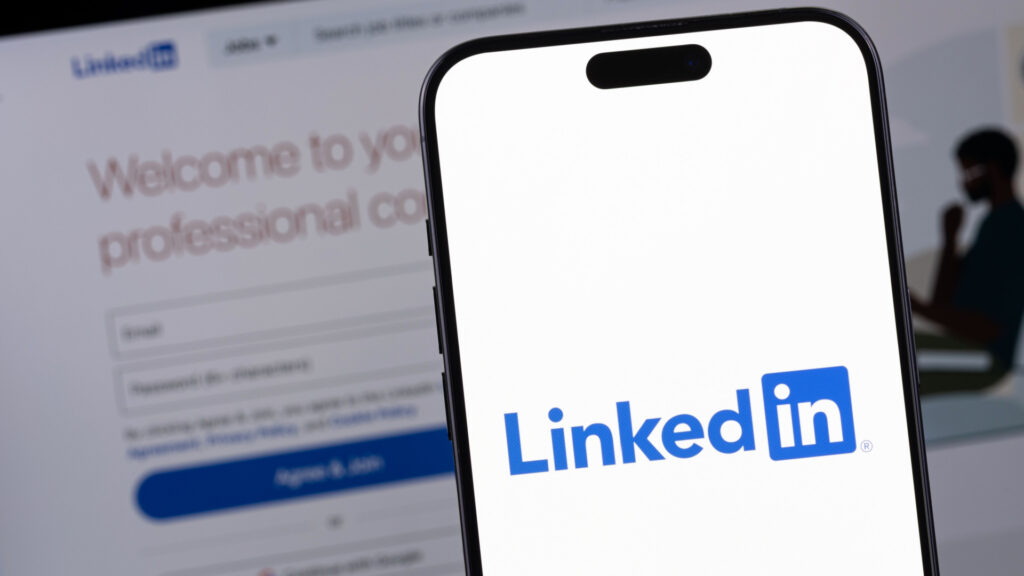
Convincing B2B brands to test LinkedIn Ads is getting easier as Google’s CPCs continue to rise.
For its part, LinkedIn has helped make a case for itself with some much-needed updates lately, including UX improvements in Campaign Manager and some measurement functionality, including CAPI (finally) and a new revenue attribution report.
So, assuming you’re working with (or for) a brand that’s willing to see what kind of results LinkedIn can produce, here are the tests to prioritize, including:
- Thought leader ads.
- Conversation ads.
- Video ads.
- Carousel ads.
- Different offers.
Let’s lay out the reasoning and some recommendations for each.
1. Thought leader ads testing
Thought leader ads (TLAs) have produced great engagement for our clients since we began testing them shortly after LinkedIn introduced them in 2023.
The engagement makes sense.
Content coming from personal accounts is far more human and appealing than content coming from faceless corporate accounts.
Thought leader ads, especially given that they have only an indirect association with a brand, are perhaps LinkedIn’s ultimate top-of-funnel play.
Advertisers need to be aware of that when they test the ad type. They’re highly effective in conveying information in longer-form content and work best under the following conditions:
- A focus on customers and their problems and challenges, not your product.
- A poster with a relatively high profile, a senior title, and a good base of followers.
- An engaging hook, an authoritative but authentic tone, and highly readable formatting (e.g., short paragraphs and plenty of vertical spacing).
- Emoji usage when appropriate (but beware patterns of clearly AI-generated content).
- Images or video included.
You can use TLAs to promote assets to get lead information (you’ve all seen the “DM me to get a copy” or “Comment with {prompt}” to request a copy).
If you’d prefer to stay squarely focused on thought leadership, you can measure the effectiveness of your TLAs through engagements and impressions, particularly those from brands in your ICP.
Dig deeper: Top 6 B2B paid media platforms: Where and how to advertise effectively
2. Conversation ads testing
TLAs are great for getting in front of a fairly good-sized, less-targeted audience for little cost.
On the other hand, conversation ads are good for very small audiences, with precise targeting of users in your ICP and tightly aligned, customized messaging.
Even with their small scale, conversation ads are much more cost-effective at engaging qualified leads than sponsored content.
Our clients use them for prospecting, but not just with decision-makers.
With a strong enough message, conversation ads can spark engagement with decision influencers that may catalyze internal conversations within the brand’s team.
Conversation ads have several elements to test:
- CTAs.
- Messaging angles and length.
- Different senders (e.g., a company’s CEO vs. a director of business development).
- Subject lines.
- Etc.
Test one of these at a time to keep results clear.
3. Video ads testing
LinkedIn has introduced more functionality for video ads in the past year-plus. This has been a win-win for the platform and its advertisers.
Video has proven effective at the top of the funnel because people come to LinkedIn to engage with content, not to find solution providers, and video is a highly digestible, immersive format.
LinkedIn was later to the video game than Meta (as well as YouTube and TikTok), but its users are showing similar preferences for playfulness and authenticity.
Our clients have had more success with less-produced videos and animations than slicker, more corporate-looking content, so save yourself some budget and go for a more UGC angle.
Dig deeper: How to test UGC and EGC ads in Meta campaigns
4. Carousel ads testing
Although carousel ads aren’t as immersive as video, the interactive element has provided a nice blend of user engagement and a narrative-friendly format for advertisers.
When we develop carousel ads for our clients, we test a few content themes:
- Highlighted features of our clients’ product or service, with real use cases.
- Data or insights-driven slides that include stats or quantifiable results.
- A problem/solution journey that starts with a pain point and explains how the brand’s product or solution solves it.
For all of these, the last slide of the carousel has a CTA, which we decide on thanks to our last test.
5. Offer testing
Remember that you’re living primarily at the top of the funnel with the ads I just mentioned, and align your offer accordingly (very, very few users are going to “sign up for a free demo” with a brand they just learned about).
We’ve seen good conversion rates with low-friction CTAs like “learn more,” “see how,” and an offer to engage with calculators or other interactive features.
Test a few offers to see what works; from there, make sure you’ve got strategically planned email sequences that align with the content the lead has engaged with.
Dig deeper: 5 underrated tools to boost your B2B PPC performance in 2025
Final thoughts
The most important consideration to keep front and center for LinkedIn ads is their relative strength in the customer journey.
They’re great for building engagement and awareness, not closing the deal.
Although we have definitely reaped the benefits of targeting in-market users, from decision-influencers to decision-makers.
Approached with the right mentality, strategic LinkedIn tests will introduce some productive options for bringing high-value users into your funnel.
Make sure you’ve locked down your nurture strategy and your measurement strategy, including the CAPI and revenue attribution tools mentioned above, to help you get a clearer picture of the ultimate impact of LinkedIn ads in your bottom-funnel metrics.
My well-informed hunch is that you’ll realize that adding LinkedIn to your channel mix is a great way to mitigate Google’s increasing costs and keep your funnel supplied with new users.

